It’s an October Sunday. We enter into a Biellese foundation, symbol of urban and cultural rebirth. We find a citadel without walls, open, which filled a day with art and gathered managers and referents of local and international organisations and institutions. The wool city was, for a day, at the centre of the world. The actors of this initiative were not mere passive listeners, but active and integral part of a mosaic whose pieces are kept together by social art. It was also thanks to the contribution of these protagonists gathered at Fondazione Pistoletto on 13th October that the 22nd edition of Arte al Centro has represented “a meaningful passage in Cittadellarte’s evolution”, quoting our interview with Michelangelo Pistoletto. But let’s go through the phases of the day which has once again seen art at the centre of a responsible social transformation. After the guided tours of the exhibition Padre e Figlio, the activities started: Paolo Naldini, director of Cittadellarte, opened the Terme Culturali – in what is probably the first room in the world of this particular type of ‘terme’ – presenting Watermemories, a sound work by Max Casacci and Hatisuara, and introducing the features of the treatments. Naldini then left the floor to the Subsonica’s guitarist: “What we experience – explained Casacci – is an immersion in the sound world of the water element. Knowing I had been dealing with turning noises into music for years, Michelangelo asked me if it would be possible to create a musical piece with an important emotional crescendo using the sound and noises of Biella’s water”. After the sound work, the treatments continued with Habitus-Abito-Abitare, a room where the protagonists are the sustainable and modular items of clothing realized by fashion designer Flavia La Rocca in collaboration with Cittadellarte’s Fashion Office.
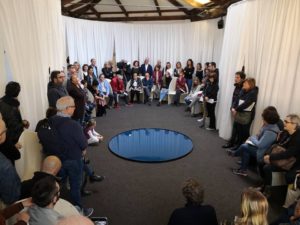
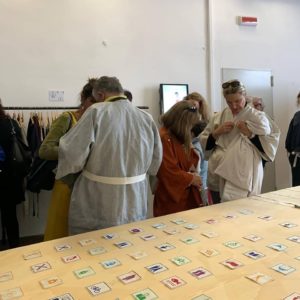
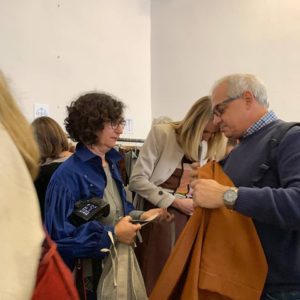
While in the ‘Factory and Terme’ quarter the first (of several throughout the day) round of treatments was being carried out, the ‘n.o.v.a.civitas’ quarter was hosting the conference The key themes to work on for the development of the territory starting from culture and art. This debate gathered in Sala Cervo numerous speakers, all representing organisations from different sectors and contexts. The exchanges were productive and the attendees had the opportunity to delve into their fields of expertise – starting from an image shown on a maxi-screen – and analyse the present to lay the foundations for a better future. Not a generalist and rhetorical objective, but one characterised by a sustainability reaching every corner and aspect of the social fabric. In fact, many of the speeches were aiming at delineating the future of the territory focusing on micro- and macro-issues – inspired by the UN’s 17 Sustainable Development Goals – in a process which includes culture as one of the driving forces towards sustainability.
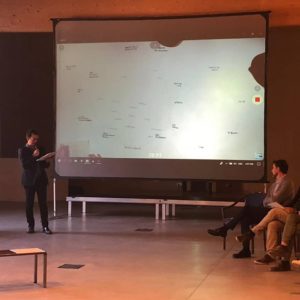
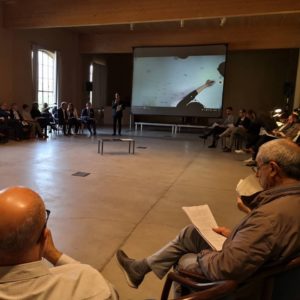
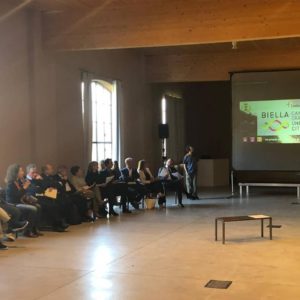
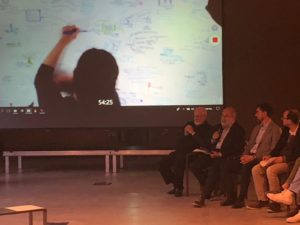
Among the numerous speakers was the ‘special guest’ of the extended round table – as it could be defined for the quality and quantity of speeches – Pier Luigi Sacco, Special Adviser to the Commissioner for Education and Culture of the European Commission and future professor at the UNIDEE Academy, who illustrated how the project fits the European context – in the way the European Union approaches sustainability – talking in particular about the New European Agenda for Culture. The cycle of speeches symbolically closed with Michelangelo Pistoletto’s words: “I am here to gather, – said the artist – we are all united in this circle. I see today as a good bike ride: the bicycle can in fact be considered as a symbol of the Third Paradise, it has two wheels on opposite sides, while the central circle is a wheel that needs to be actioned in harmony with the other two. It’s all about finding a balance between differences, in relationships as in any other context”.
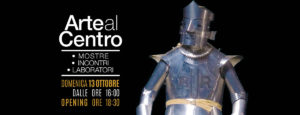
At 18.00, after the conference, Arte al Centro officially opened (click here to watch Facebook’s live streaming) with a speech by Paolo Naldini: “The work of redevelopment and regeneration of these abandoned spaces – said the director in reference to the area of industrial archaeology newly restored for the occasion – has been a great challenge from many points of view, in particular the economic and financial one, but we have had the all important support of the institutions. The way the committee of Biellese citizens was crucial in helping the renovation of the floor housing Michelangelo Pistoletto’s Third Paradise. Exhibitions, debates, performances and publications of this edition of Arte al Centro assess the state of advancement of the project Pistoletto announced in 1994 with the Progetto Arte manifesto, in which he expressed Cittadellarte’s intention with these words: ‘the time has come for artists to take on the responsibility of establishing ties among all other human activities, from economics to politics, science to religion, education to behaviour – in a word, among the threads that make up the fabric of society’.
Inaugura ufficialmente Arte al Centro 2019!
Pubblicato da Cittadellarte-Fondazione Pistoletto su Domenica 13 ottobre 2019
This event – claimed Naldini – is like a report, or a bulletin, as much as the ‘Journal Progetto Arte’ and the magazine being distributed today. How far have we got? We have given this epochal project a symbol, the Third Paradise; we have conceived and experimented with a method, the Demopractic Work, in phase of development in working sites from Cuba to Rome, from Melbourne to Bali to Budapest, and about to start in Biella as well; important to highlight is also the University of Ideas, born in ‘98, currently being established as the UNIDEE Academy and in the process of being ministerially recognised. It is a school where to study techniques of peace, in this ‘third world war’ we have unleashed on ourselves. Peace is conveyed by all the expressions of sustainability, and this is a school of balance and harmony between nature and artifice, between you and I, between human and non-human. The bulletin of Arte al Centro therefore talks about sustainable fashion, Terme Culturali, the mapping of a demopractic work, sustainable and ethical food farming supply chains and much more”.
Cittadellarte’s director’s words were followed by speeches by Elena Chiorino (Assessor for Education, Work, Professional training, Rights to a University Education of Regione Piemonte) and Barbara Greggio (Assessor for Commerce and Economic Development, Productive Activities, Tourism, Mountain, Project ‘Biella City of Fashion’), also the speaker of the afternoon’s conference. Naldini then took back the stage to award – together with Armona Pistoletto (president of the association Let Eat Bi) and Pier Luigi Sacco – Andrea Paoletti from Casa Netural with the Minimum Prize (a dedicated article will follow in the next few days). The evening continued with a performance by fashion designer Silvia Giovanardi, the live set Materia che diventa musica (Matter turning into music) by Max Casacci, and a live performance and a DJ set in the spaces of Hydro.
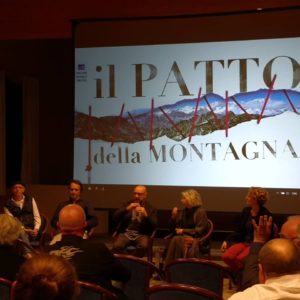

The event also included a few films: Il Patto della Montagna (The pact of the mountain), by Manuele Cecconello and Maurizio Pellegrini, followed by a debate with the authors and the producer Elda Ferri; The Human Tools by Nico Angiuli; a video installation curated by Su Tomesen called Street Vendors: Medellìn, Tirana, Johannesburg, Yogykarta; Fuori Fuoco (Out of focus), directed by six inmates from Terni’s prison, produced by Sandro Frezza and Ferdinando Vicentini Orgnani with RAI Cinema.
Very successful were also the other presentations of the day: Vasi comunicanti (Communicating Vessels), a video installation directed by Nico Angiuli with texts by Paolo Naldini and Chiara Belliti, realised with the collaboration of Teatrando and Patatrac Teatro; the Art of Demopraxy at the Museum of the Present; CirculART, an artistic project from an idea by Officina+39 – Fashion and Sustainable Chemicals realised and produced by Cittadellarte (see a group picture of the protagonists below); Le Siepi (The Hedges), an artistic project by Joel Auxenfans; the exhibition La stoffa sta dentro (The fabric is inside) by the Rebirth/Third Paradise ambassadresses Daniela Di Gennaro, Iole D’Agostino and Giovanna Costanzo; the audio-visual installation SAARV by Aaron Inker Nicholas, Annalisa Zegna and Kreggo.
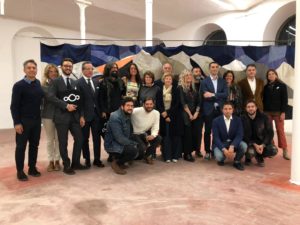
Once again the event is not a finish, but a new starting point to place art at the centre of a responsible social transformation.
In the next few days we will publish a series of video-interviews with the protagonists of the day, keep following us!

